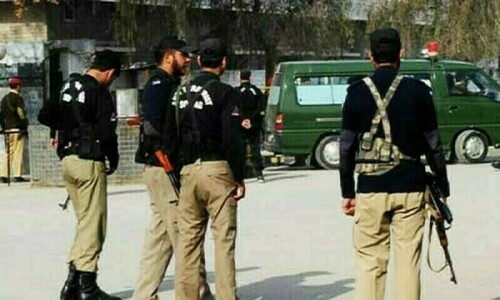SRINAGAR: The machine guns peeking over parapets of small, sandbagged concrete bunkers and the heavy artillery cannons dug deep into disputed Kashmir region’s rugged terrain have fallen silent.
At least for now.
The Line of Control (LoC), a highly militarised de facto border that divides the disputed region between India and Pakistan, and a site of hundreds of deaths, is unusually quiet after the two countries last month agreed to reaffirm their 2003 ceasefire accord.
The somewhat surprising decision prompted a thaw in the otherwise turbulent relations between the two countries but also raised questions about the longevity of the fragile peace, in part due to earlier failures.
The crackdown by Indian forces and attacks by the residents of India-held Kashmir have continued inside the disputed territory.
Experts say US, China working to reduce violence
The ceasefire, experts say, could stabilise the lingering conflict that has claimed tens of thousands of lives. Kashmiris say the rare move should lead to resolution of the dispute.
It was unclear what prompted the two militaries to adhere to the accord they had largely ignored for years. But experts point to a climb-down by both from their earlier stance following a decision by India to strip occupied Kashmir of its semi-autonomy and take direct control over the territory in 2019, and its months-long bitter border standoff with China.
Paul Staniland, associate professor of political science at the University of Chicago, said the ongoing costs of clashes along the LoC, the economic effects of the pandemic, and other foreign policy challenges facing both countries might have combined to create incentives to pursue a ceasefire.
Since 2003, the ceasefire has largely held despite regular skirmishes. Both India and Pakistan claim the region in its entirety and have fought two wars over it, and in India-held Kashmir people opposed to Indian occupation have security forces since 1989.
The ceasefire announcement came shortly after China and India agreed to a military disengagement from a portion of their disputed border after a months-long deadly military standoff. It had led to fears of a two-front war between India and China, with the latter assisted by its closest ally, Pakistan.
Some sort of pressure, possibly from Washington and Beijing for different reasons, is pushing India and Pakistan for wider peace moves in the region, said Siddiq Wahid, historian and former vice chancellor of the Islamic University of Science and Technology.
Beijing wants Pakistan to focus on securing its investments as part of the Belt and Road Initiative, a massive, cross-continental infrastructure development project aimed at expanding China’s commercial connections globally. Islamabad is a key partner and some Chinese-built highways snake through Azad Kashmir. The US, on the other hand, is courting India to focus its energies on countering China.
If Pakistan is indeed looking to move towards a new regional role, embracing geopolitics, reducing tensions with India is a must, and if India is going to pivot to deal with a rising China, it has reasons to want to calm relations with Pakistan, said Staniland, a South Asia expert. The real question is whether these reasons remain powerful enough over time.
The thaw in relations became apparent when Indian Prime Minister Narendra Modi ceased playing up rhetoric against Pakistan and referencing Kashmir in campaigning for elections in four key states.
In Pakistan, too, political leadership and the military have shifted from their earlier position of not engaging with India until it reversed its decision to annul occupied Kashmir’s semi-autonomy.
Last week, Chief of the Army Staff Gen Qamar Javed Bajwa said it was time for the two countries to bury the past and resolve the dispute over Kashmir peacefully. His remarks followed Prime Minister Imran Khan’s repeated calls for good relations with India with a caveat that the Kashmir dispute remains at the centre of any future talks. Since the announcement of the ceasefire, Khan, too, has abandoned his past rhetoric against Modi.
Modi appeared to reciprocate, sending last week a letter to Khan seeking cordial relations. Khan replied on Tuesday but reiterated that lasting peace was mainly contingent on resolving the future of Kashmir.
Scepticism among Kashmiris
The rapprochement has sparked scepticism among Kashmiris who fear the dispute could be pushed to the backburner given the fast administrative and political changes in the region by India that they have likened to settler colonialism.
“We are not against talks and want an end to violence. But there has to be an end to repression too,” said Mirwaiz Umar Farooq, an influential Kashmiri leader who has been under house arrest since August 2019. “The whole idea behind the negotiations has to be a resolution of the Kashmir issue as per the wishes of its people.”
In the past, Pakistan and India made multiple attempts to broker a deal over the Kashmir issue. They also initiated confidence-building measures like exclusive barter trade between two parts of Kashmir, sporting games and bus services for divided families.
The ceasefire can lead to relative peace but one should not expect lasting peace, said Vinod Bhatia, who was India’s director general for military operations from 2012 to 2014.
Meanwhile, villagers living along the frontier are paying the price.
The lives of Nader Hussain and Munshi Muhammad Arshad are divided by a barbed concertina wire. Hussain lives in India-held Kashmir and Arshad in Azad Kashmir.
In late November, Hussain saw an artillery shell fly towards him in his mountainous village. The 50-year-old couldn’t outrun the projectile and lost both legs in the blast. Two other men were killed on the spot.
“The two countries do politics on our bodies, but this must end,” he said.
On the other side, 45-year-old Arshad, who lost his father to an artillery shell fired by Indian soldiers, hoped for peace.
But a durable peace, he said, will only come when the Kashmir issue is resolved.
Published in Dawn, April 3rd, 2021













































